Texaco Star Theater Became Radio's Biggest Hit Show
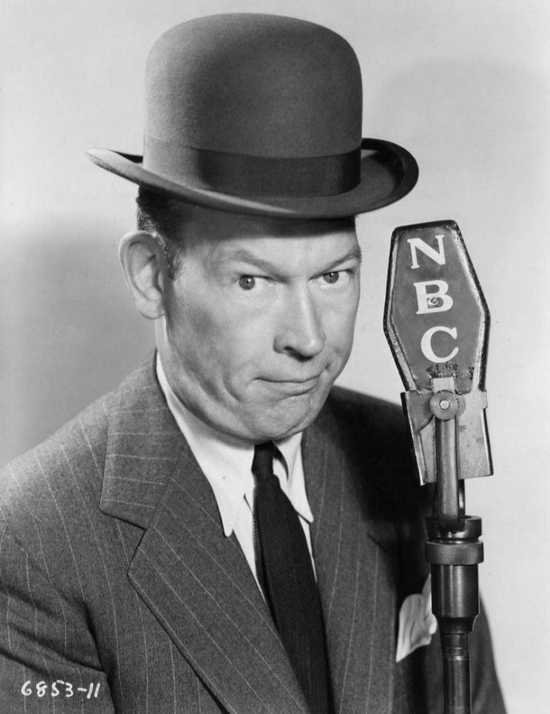
How many persons throughout the United States wonder what has become of Theda Bara, most glamorous of the movie sirens of more than a decade ago? And how many others are intrigued by the idea of hearing the bewhiskered Santa Claus of Hollywood's famed Santa Claus Lane on the air; or George McManus, creator of the popular comic strip dealing with the doings of Jiggs and Maggie; or Tom Mix, hero of a thousand cinematic gun battles and now a famed rodeo star?
With shrewd showmanship, producer Ed Gardner, who directs the Hollywood half hour of the Texaco Star Theater, has taken advantage of the public's curiosity about celebrities whom they have never heard on the air, combined it with human interest, gentle ribbing and fast-moving comedy to make the show one of the most popular on the national networks.
Gardner strives for the unusual in the matter of guests on the program. One week it may be a famed film star who has dropped from sight. The next it may be an author of a bestseller. Among the guests he has had on the show, in addition to McManus, Mix, Bara and Dale Carnegie are Mack Sennett, father of the custard pie comedy; Mae Murray of The Merry Widow fame; Bela Lugosi, whose role of Dracula is outstanding among the screen and stage horror performances; Basil Rathbone and many more.
"The public is tired of hearing from the big names in films today," says Gardner. "What it wants is human interest. Everybody wonders what has become of the old timers. Everyone is curious about celebrities who are seldom heard on the air."
"We think we've got the answer. Naturally, a cut-and-dried interview would be dull, but combine it with laughs and you've got something."
Credit for the idea goes to Gardner, who took over the show this fall. Believing the guest star business to be overdone, Gardner sought a substitute -- one that was unique and yet combined all the good features of the guest star idea with greater human interest and the present Texaco show is the result.
Emceeing the program is wisecracking Ken Murray who works with Gardner and the writers on the comedy. A former screen and vaudeville actor and for several years a nationally syndicated humorous columnist, Ken fits perfectly into the writing picture and works hand in glove with the production staff.
Between Ken and Gardner, they decide upon guests, evolve the idea of the evening's skit and work out the fast-moving comedy dialogue.
A new addition to the cast of the program is Irene Ryan, the wisecracking, slightly hard-boiled young damsel who keeps Murray in line on the show by her caustic remarks whenever Murray's ego threatens to get the better of him. She never fails to bring down the house with her vitriolic interruptions.
Irene recently came to the coast with her equally well known husband, Tim, with whom she trouped for many years under the team of Tim and Irene. And no sooner did Gardner hear of her arrival than he signed her as a regular member of the cast.
Musical interludes of the program are supplied by Frances Langford and Kenny Baker, top ranking singers in the radio field, who are also being used in the comedy skits since Gardner took over the production reins.
Baker is cast as a naive, slightly dumb young fellow, while Frances, as Francie-Lou, wins the audience with her typically Southern accent -- a holdover from her childhood days in Florida.
Furnishing the musical background for Frances and Kenny's songs are David Broekman and his band, while commercials are deftly handled by the suave Jimmy Wallington, veteran announcer of the show.
From Radio Varieties, January 1940
Hedy Lamarr Saved Radio Show That Found Homes for Orphans
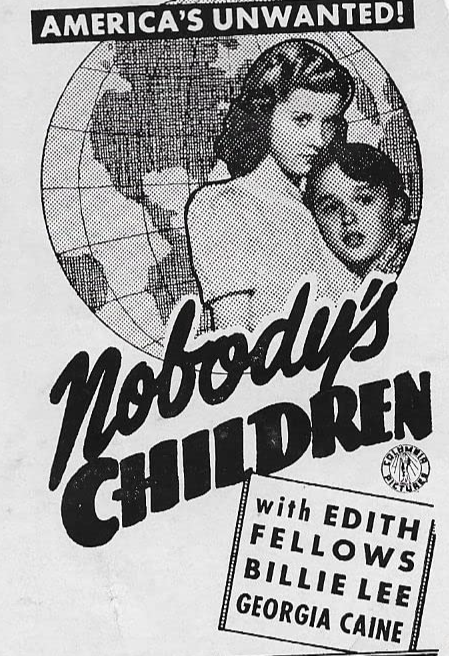
I can tell you now the poignant story of how a complete half hour radio program was kept on the air for 13 weeks through one rather famous listener's impulsive and sentimental gesture.
The story begins on a Sunday in July a year and a half ago, with the first broadcast over the Mutual network of a half hour program called Nobody's Children. Its studio setting was unique, for it broadcast from the reception room of the Children's Home Society of California, dramatizing the stories of the orphans at the Society. Movie guest stars interested in the program appeared without payment, making brief talks.
The program ran over a year, always with the hope that a sponsor would take the broadcasts. None did and so, on a Sunday this past fall, Walter White Jr., who conceived the program and directed all its broadcasts, announced to listeners that the program would have to end. It could not afford to be continued, he explained, without sponsorship to absorb the costs of broadcasting the program.
A few days later, White had a check for $1,800 -- enough to keep the program on the air several more weeks without sponsorship. The check was from Hedy Lamarr.
Grateful, he respected a request that the gift remain anonymous, but news of it reached Louella Parsons and was published in her column.
That is why I am able to write this story at all. I don't know whether the program will continue longer on the air, now that the additional weeks have passed. I hope it will, because as White wrote me, "The purpose of our program is to acquaint listeners with the problems of the homeless and underprivileged child, also to stimulate interest in the older children, to the end that they will be given such essentials as a home, foster parents, and affection, understanding and opportunity."
He also wrote, "Miss Lamarr gave in the spirit that most gifts from the heart are made, in all sincerity, and even dated the check she sent me with her little adopted boy's own adoption date."
Fred R. Sammis in Radio and Television Monitor, March 1941
David Freedman: How to Make Visual Comedians Funny on Radio
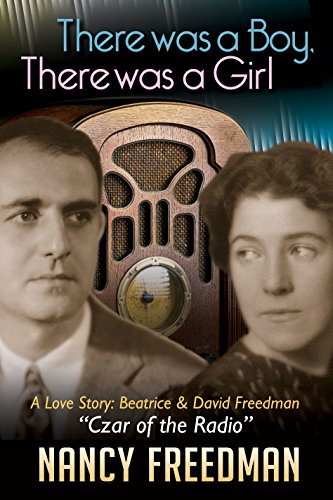
It has been my good fortune as a radio writer to be associated with such stars as Eddie Cantor, Lou Holtz, Fanny Brice and Al Jolson. In every case I strove to transplant the magic personality of these stars to the medium of the air by creating a sound substitute for those qualities that were purely visual.
Cantor's electric personality with eyes popping, hands vibrating and every part of his being reaching out to warm an audience is a difficult thing to convey through mere words coming out of a loudspeaker. It was necessary to create a character that would bring into every home a picture of this live, vivid comedian whose art is not merely slapstick and whose humor is not merely gags.
We hit on the idea of making him Uncle Sam's advisor -- Eddie Cantor, U.S.A. -- and immediately he seemed to have a permanent and important place in the scheme of things. His comedy became timely and topical and just as in a circus there was always a clown who got tangled in the carpets and bungled all the jobs of setting up the apparatus, so Cantor got tangled in world affairs and extracted comedy out of all the big problems that confronted the nation.
In addition to the character, we also invented comedy sounds that would take the place of his running up and down the stage, darting glances and clapping his hands. The ear has as great a sense of comedy as the eye if you tickle it properly.
A scene in an aeroplane where he talked faster if the plane went faster and talked slower when the plane slowed down gave the complete illusion of an air adventure to the listeners in the home. When he flew to great heights his voice became shrill and when he descended, it grew bass. These were sound tricks that could not have meant much on the stage, but on the radio created a complete comedy illusion.
I could give any number of such examples. In a mock parting between Cantor and Jimmy Wallington they both became so overcome by emotion that they cried. Finally Wallington pretended to become so hysterical that Cantor had to read the commercial advertisement for him and he read the entire announcement in a sobbing broken voice choked with tears.
If you saw the scene it would have spoiled the illusion -- but listening to it over the radio, it proved to be hilarious fun.
David Freedman in Radio Guide, August 12, 1933
Jack Benny Tells on Wife Mary Livingstone
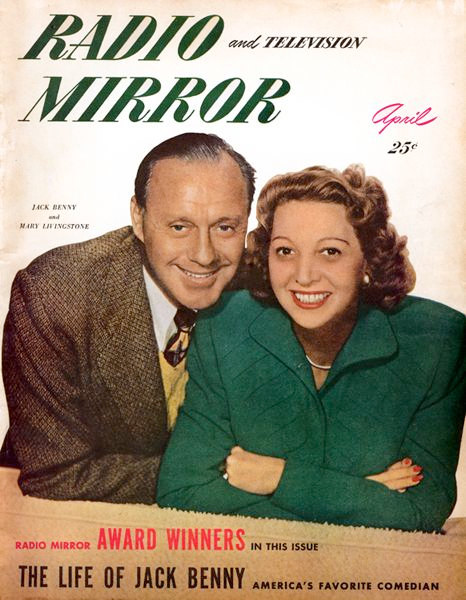
I'm glad of this opportunity to write the lowdown on Mary Livingstone, because at home or on the air I never get the chance to say anything. There's a gal that always has to have the last word, and trouble is, it's usually funny.
Yes, Mary and I have our differences, but about the only time we ever really clash is on Wednesday night. As far as I'm concerned the only good thing about that program is Kenny Baker, who, incidentally. has a higher IQ than Fred Allen. Now don't think I have anything against Fred personally -- I just can't stand him. If Mary tunes in on him next week I'm going to take the earphones and run 'em through the meat grinder. (Well, I guess I should wish Freddie a Merry Christmas. That's the trouble with me, I'm not a louse.)
But getting back to Mary, she loves to entertain. And I think she should -- I like to have people in, too. Incidentally, Bob Taylor and Barbara Stanwyck have been at our house seven times this month. We've been to their house only three times and the month is nearly over. I wouldn't mind that so much, but Taylor eats like a horse. I don't know how he keeps his figure.
Another thing, Mary always tries to give the impression that I'm tight. Well, I'll tell you something about her. When I was making Charley's Aunt, she wouldn't even lend me a girdle. I had to go out and buy one! And I needed it for only eight weeks. Oh well, I'll think. of some way to use it now.
Anyhow, there's one thing I can say for Mary -- she's not the least bit jealous. She was out at the Korda studio watching me do a very passionate love scene with Carole Lombard the other day, and when I kissed Carole Mary just laughed and laughed. Clark Gable was standing there and he laughed too. I'm glad that Mary and Clark aren't narrow-minded.
Guess that's about all for now. I've got to go out and get my Christmas tree. I've got a swell one picked out. Hope you all have a very Merry Christmas.
Jack Benny in Movie-Radio Guide, December 20, 1941
NBC Announcer Ben Grauer's Book Collection Goes Back to 1555
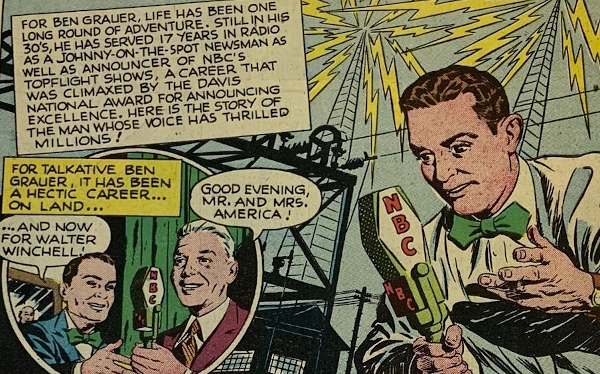
Reporting an eclipse of the sun from the jungles of Brazil, giving listeners a tense description of the state-by-state returns during a hotly contested presidential election, commentating with quiet dignity on the next selection of the NBC Symphony orchestra, bringing the theatre into your own living rooms each weekday morning on his WNBT Footlights and Klieglights program and covering the news wherever and whenever it happens is the day-by-day job of Ben Grauer, one of the most popular and busy personalities in radio and television.
People in the broadcasting business have stopped wondering "how he does it." They just expect Ben to have an inexhaustible supply of energy and he has never given them any reason to believe otherwise. But, like any other active person, Ben has his hobbies to provide him with badly needed relaxation. He is an ardent book collector and lists archeology as his number two hobby, placing special emphasis on the culture of the ancient Maya. One need only step across the threshold of Grauer's bachelor apartment in midtown Manhattan to see samples of his collections.
His walls are lined with well-filled bookcases and shadow boxes holding some pieces of Mayan handiwork. In fact, his library became so space consuming that he had to talk the management of his hotel into renting him an unused electric closet for additional storage.
Browsing through the Grauer library, you will see rare first editions, books on games of all descriptions and a goodly number of foreign language volumes. Since he makes his livelihood through the use of words, the study of word derivations is Grauer's pet hobby. His most prized edition is one of the 12 existing copies of the first dictionary printed in the Western Hemisphere, Molina's Diccionario, published in Mexico in 1555. He also has a first edition of Webster's Dictionary bearing the publication date of 1828.
In a slightly lighter vein, Grauer collects jokebooks and volumes on the origin of slang terms. His oldest book in this line is the first dictionary of slang ever printed in the English language titled New Dictionary of the Canting Crew, published in London in 1695. He proudly displays a third edition of Joe Miller's jokebook, which is considered a collector's item.
Although his interest in book collecting and word origins dates back as far as his school days, Grauer first discovered the fascination of archeology as a direct result of his NBC work. He was sent to Mexico on an assignment in 1940 and he has been south of the border six or eight times since then for both business and pleasure.
During these trips he developed a great curiosity about the culture of the Maya and Olmec tribes. He has participated in two exploratory expeditions to Mexico and Panama as guest of Mathew Stirling of the Smithsonian Institute. The Mexican expedition made an important contribution to archeology by finding the largest sculptured stone head as yet unearthed.
Grauer takes great pains to explain that he had nothing to do with this discovery: "It was wonderful of Dr. Stirling to allow me to come along."
When asked if book collecting had ever produced an unusual anecdote, Ben thought a bit and then smilingly came up with this one. In 1946 he was appearing as co-emcee on an NBC-BBC program titled Atlantic Spotlight, in which Leslie Mitchell interviewed personalities in London and then switched to Grauer conducting interviews in New York. While visiting London a few months after the series was concluded, Ben was hunting through the book shops at Charing Cross Road and his voice was recognized no less than three times in an hour by various shopkeepers as "that American chap who chats with Mitchell on the wireless each week."
In his 16 years in radio, Ben has never once been recognized by his public in America. Now what is that old story about a prophet being without honor in his own land?
From Radio Television Mirror, September 1951
Radio: The Cure for Juvenile Delinquency
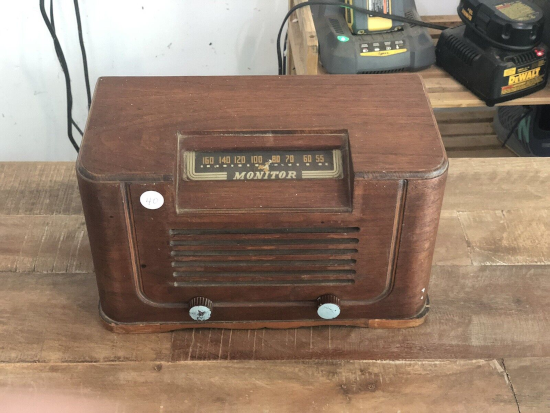
Justice James Church Cropsey, one of the leading jurists of the state of New York, recently sentenced several young men, some of them scarcely more than boys, to long terms in Sing Sing Prison. Justice Cropsey, in making an address from the bench, offered the following to the boys:
We can lessen the crimes in our midst by giving our attention to the youths. They need a man's guiding hand and helpful personality. They need the example of a true man's life in the forming of their character. Brooklyn can be made better. Whether it will depends on us, its men. Shall we turn our backs and ignore existing conditions, or shall we accept the challenge and lend ourselves to the task?
It's a man's job and it needs red-blooded men who will put something of themselves in the undertaking.
Men, this is a call to us. Are we awake? Do we hear? Will our conscience let us ignore it? Shall we not help to make better the boys of today? Should we not begin at once?
Radio World now asks a few questions supplementing Justice Cropsey's queries from the bench:
Isn't keeping boys at home o'nights the best plan in the world for keeping them honest? Does every youth who owns a radio set stay at home and tune in? If you know a boy who is going wrong, wouldn't you endeavor to save him?
And wouldn't the saving process be started if you were to give him a radio set so he would have an added incentive for keeping off the streets and avoiding bad company?
Will you help?
And isn't the answer a quick and generous YES to all the questions?
From Radio World, March 22, 1924
The Great Radio Detectives of the 1950s
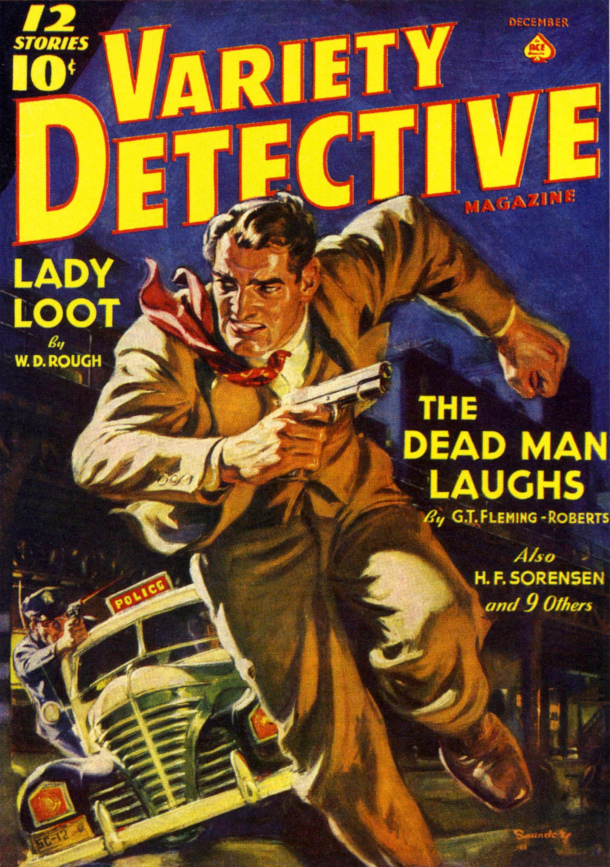
Richard Diamond, Private Detective is a tough private eye played to perfection by a former crooner Dick Powell. Before he started specializing in rugged roles such as the famous CBS sleuth, Dick had built up a world-wide reputation as a singer. Born in Mountain View, Arkansas, he was spotted in Hollywood in 1933 and spent the next 10 years starring in musicals. He wanted a change -- and got it in Murder, My Sweet, his first detective role. In 1945, Dick married June Allyson. He has two kids.
True Detective Mysteries, the popular Mutual series about a noted detective magazine, stars Richard Keith in the role of John Shuttleworth, the editor. Dick was born in New York City in 1908. His first job after graduation from the High School of Commerce was driving the ponies and carriages for children's rides in Central Park. A part in Diamond Lil' on Broadway was the beginning of a successful career behind footlights and microphones. Richard once played Santa Claus on radio.
Mickey Spillane mystery series stars Larry Haines, who hails from Mount Vernon, New York. Larry's flair for acting began to show even in grammar school, where he took the leads in class plays at the age of seven. After graduation from college, he joined the Westchester Players, a summer stock group, then turned to a small radio station on Long Island. Since that time, 36-year-old Larry has starred on every major radio and TV show in New York. His spare time is devoted to his hobby -- photography.
Yours Truly, Johnny Dollar on CBS stars that versatile gentleman John Lund. Besides being a talented actor, Lund has written many radio scripts, including Fashions in Rations and the Jack Pepper Show. For the stage, he wrote lyrics and sketches for Leonard Sillman's New Faces of 1942-43. In Hollywood he collaborated on the screenplay for Appointment with Danger. John hails from Rochester, New York. In 1942, he married actress Marie Charton, with whom he appeared in New Faces.
The Top Guy on ABC stars that well-known radio racket-buster Jay Jostyn of Mr. District Attorney fame. Jay is a student of crime in his spare time, too; in Manhasset, Long Island, where he lives, he is engaged in community activities aimed at decreasing juvenile delinquency. Born in Milwaukee, Wisconsin, Jay majored in dramatics at Marquette University, then moved to Hollywood, where he made good as a radio actor. A New Yorker since the middle 1930s, Jay has done as many as 48 roles in 36 shows a week.
Squad Room, on Mutual, features as its star six-footer Joe DeSantis. New York City born, Joe attended the College of the City of New York where he majored in languages and was active in school dramatics. He started his acting career with Walter Hampden's company in 1931 and has appeared in many Broadway plays. In Hollywood, he played the Heavy in Slattery's Hurricane. Joe and his wife, radio actress Margaret Draper, live in a Manhattan apartment. In his spare time he is a fine sculptor.
Barrie Craig, Confidential Investigator is another in William Gargan's long line of portrayals of the intrepid private eye. Brooklyn-born Gargan actually was a private flatfoot for a time but always longed to act. He got his chance in the stage production of Aloma of the South Seas, scored in his first film Rain, and has since made scads of movies. Bill has two sons. One boy, Leslie Howard Gardan, is named for the late British star, with whom Bill once made a movie.
Crime and Peter Chambers stars Dane Clark as the handsome crimebuster of NBC. At various times in real life, Dane's been a football player, boxer, soda jerk and radio scriptwriter. Born in New York City, he earned a law degree at St. John's but drifted into radio acting and made his movie bow in Action in the North Atlantic. His last Broadway play was The Number. Dane's married to the artist Margo and has a home in California and an apartment in New York.
FBI in Peace and War on CBS has George Petrie as head man. George, born in New Haven, has been busy in the theater, movies and radio since 1938, except for three-and-a-half wartime years in the Air Force. An old hand at stalking criminals, he's been on Gangbusters, Big Story and Counterspy. George played in Boomerang for the movies; and Cafe Crown, Winged Victory and Brighten the Corner on the stage. He's married to actress Patty Pope.
High Adventure, Mutual Mystery, stars movie villain and cynic George Sanders. George was born in St. Petersburg, Russia, of English parents who fled during the revolution. In England he took a stab at industry until the Depression inclined him to the stage and a singing role with Edna Best. His portrayal of a villain in Hollywood's Lloyds of London was the first of many hits. George once patented three inventions for industry. He's the ex-husband of luscious Zsa Zsa Gabor.
Mickey Spillane Mystery stars Ted de Corsia as Mutual's Mike Hammer. It was back in 1922 that Ted got his start in radio as one of the Monticello players on WOR New York in his home town. Other parts helped Ted complete his schooling in the next five years. He went to Hollywood as a member of Orson Welles' Mercury Theatre. His films include Naked City, Enforcer and A Place in the Sun. He is married with two daughters and lives quietly in the San Fernando Valley.
Mr. Keen, Tracer of Lost Persons, the gentle but relentlessly thorough investigator, is played at CBS by Philip Clarke, who made his stage bow as a toddler in his home town of London. In the late 1920s he served as a British army officer in India. His American debut was in Joseph and His Brethren, an elaborate stage spectacle. He has since played in both New York and London, solving his cases with military thoroughness, acting with a quiet, gentle dignity.
Mystery Theatre stars Inspector Mark Saber -- otherwise known to one and all at ABC as that dashing, debonair gent, Les Damon. Les began acting in high school in his home town of Providence, Rhode Island. In 1934-35 he went to England to act with the Old Vic. Back in the U.S. he played in the original production of Dead End. Less is currently heard on three daytime radio serials. He's married, lives in Califon, New Jersey, and his hobbies include raising Boxers and making furniture.
Nick Carter, Master Detective is the impressive role created by Lon Clark over Mutual. A triple-threater, Lon is a musician and singer too. He blew his way through college on a sax, later played the piano and sang on radio in Chicago. While performing for WLW he sang with the Cincinnati Summer Opera. Born in Frost, Minnesota, he's lived in New York since 1941 with his wife and two sons. His New York apartment is packed with antiques and American history books.
Nightmare on Mutual has as its chief spine-tingler that master villain of Hollywood, Peter Lorre. Before he began scaring babies and adults, Peter left his hometown of Rosenberg, Hungary, to make his way in the theater. Minor roles led to a lead in a Berlin production, after which he scored in the German film M. Appearances in Hitchcock thrillers paved the way to Hollywood in 1935. Peter once worked as a bank clerk and he has designed stage sets and written.
Official Detective is portrayed over Mutual by Craig McDonnell, who's now in his 28th year as one of radio's top character voices. He's been heard in some of radio's best-known roles, such as David Harum and as Peter in The Greatest Story Ever Told. Born and raised in Buffalo, New York, Craig had early ambitions of becoming a singer, but soon switched to acting. Married, he has two kids. The McDonnell family goes heavily for gardening in Westchester County.
The Shadow on Mutual gets his eerie laugh from Bret Morrison, who began specializing in flesh-creepers back in 1930 with the Dracula series. Although radio mysteries are his meat, Bret is a quiet fellow out of Evanston, Illinois, who sang in the church choir, went to Northwestern University, then acted and sang on radio, including Chicago's Theatre of the Air. Bret's made four movies and he once specialized as a dialectician. He aims to fill a Broadway singing-acting role.
Twenty-First Precinct is captained by Everett Sloane on CBS. Everett's been in constant demand as an actor since he left the University of Pennsylvania to study with the Hedgerow Reparatory Theater. He's appeared in The Desert Fox Way of a Gaucho and such plays as Room Service and A Bell for Adano, meanwhile making radio his second home. He is married. He was the first director hired by George Abbott and hopes to do more directing.
From a reprint in Memories, Fall 1982
Top 10 Articles
- The Marriage of Don Ameche and Honore Prendergast
- The Night Arthur Godfrey Fired a Singer On Live Radio
- Early Radio Announcers Invented Their Profession in the 1920s
- The Mythical Town of East Tincup, Colorado
- The Earliest Radio Shows of the 1920s
- The Great Radio Detectives of the 1950s
- The Home Life of Jack Benny
- Why Vladimir Horowitz Stopped Performing in the 1930s
- Judy Canova: The Queen of Hillbilly Hokum
- Some of the Unsung Heroes of Radio

